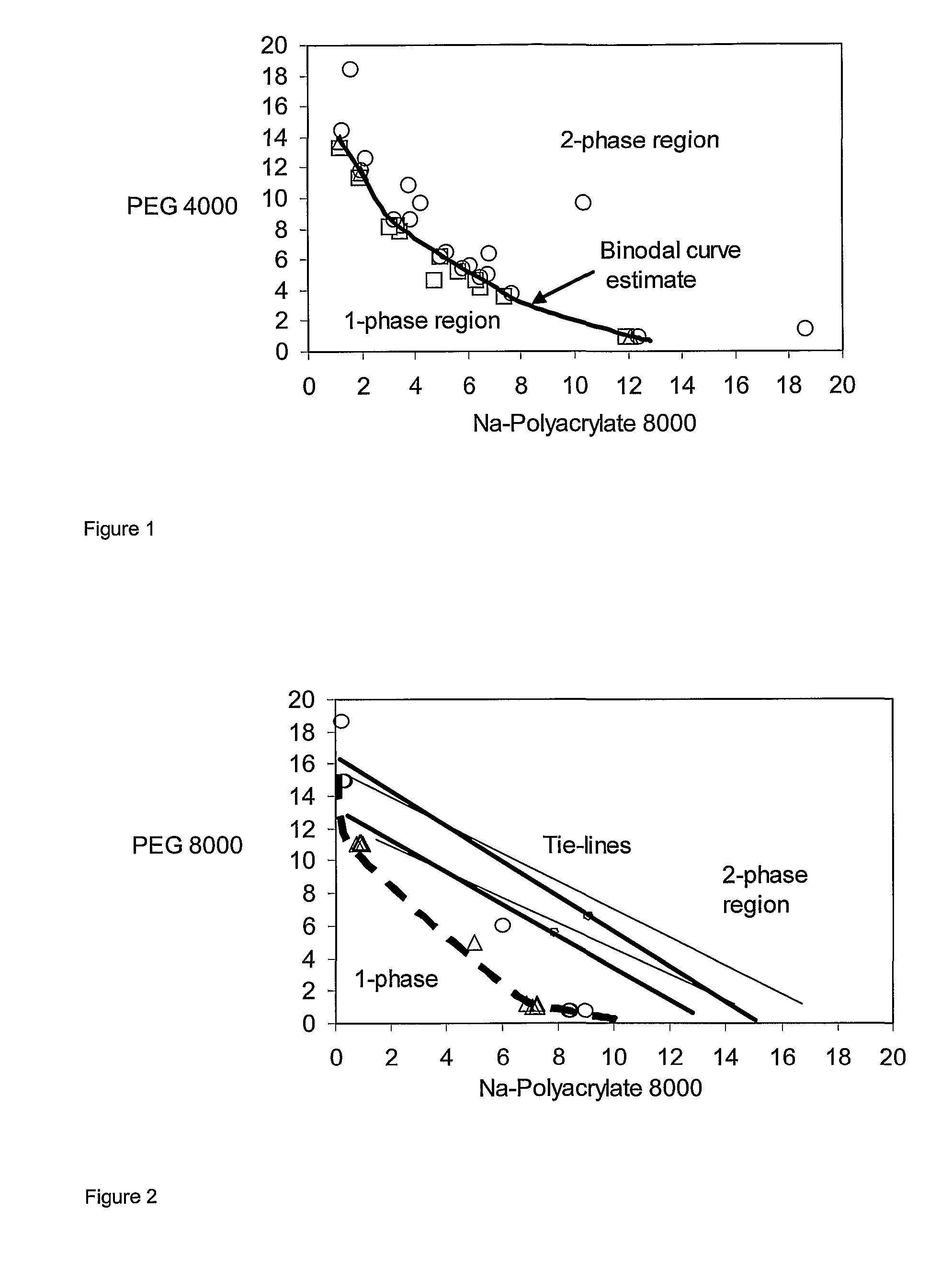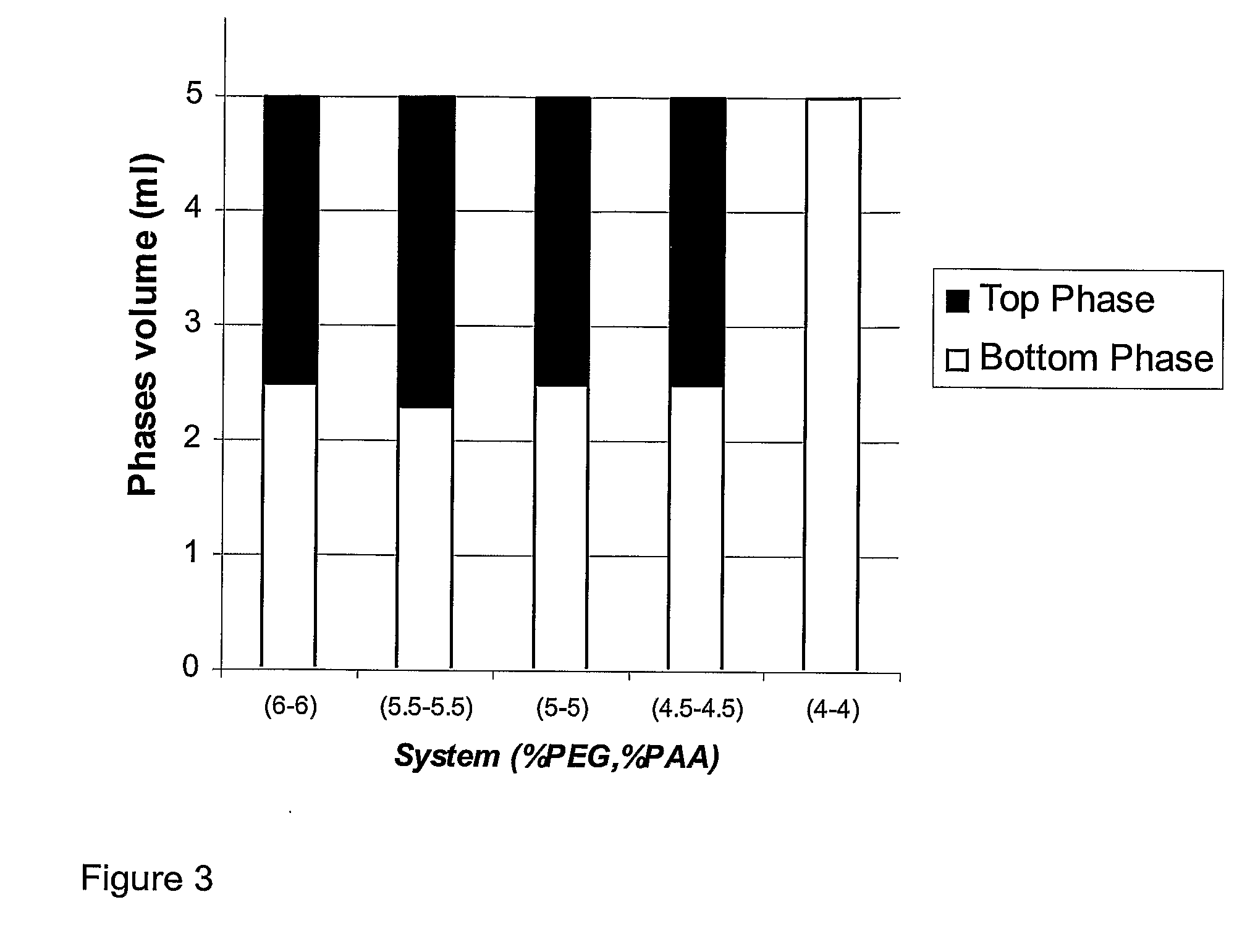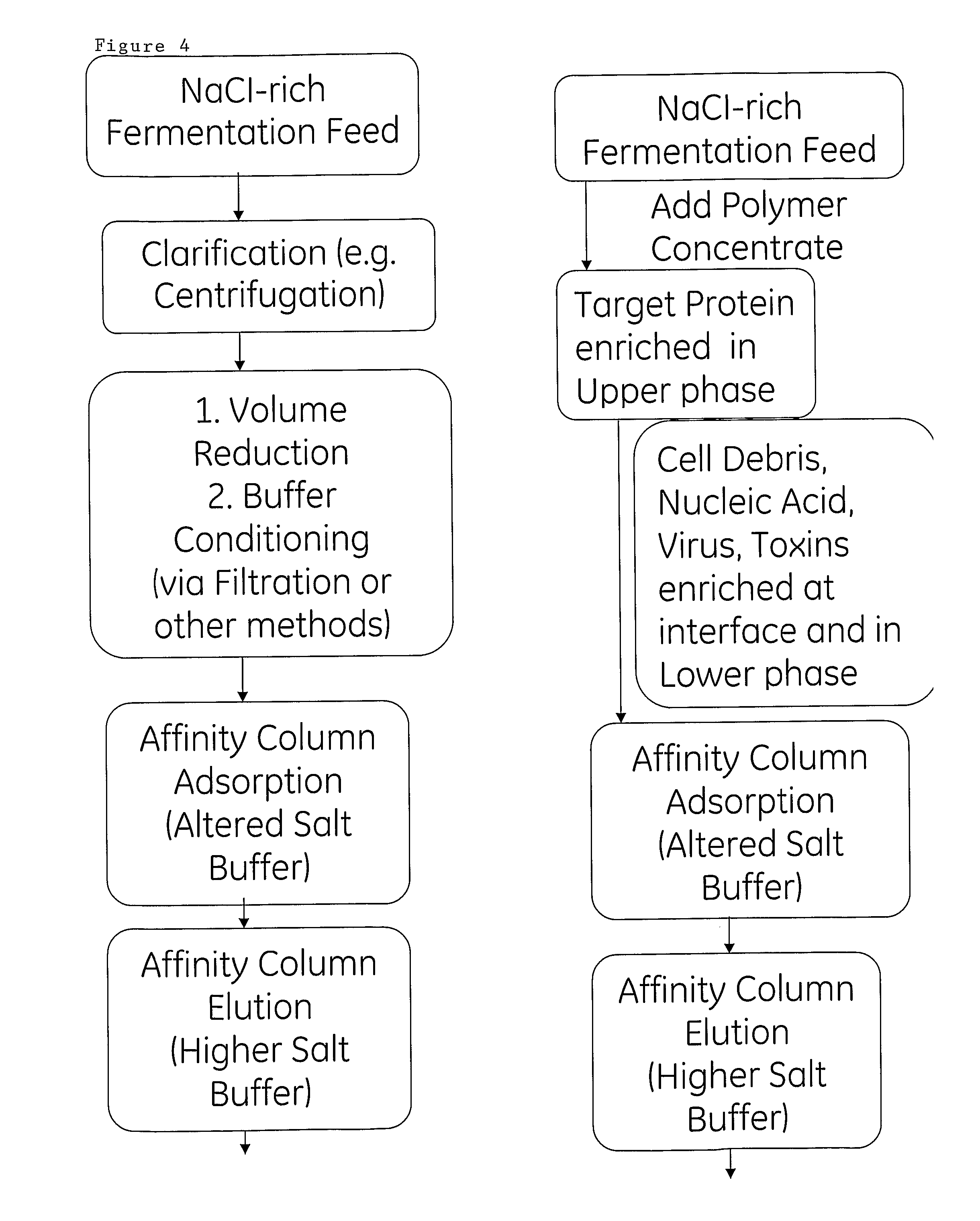Separation method using polymer multi phase systems
a polymer and multi-phase technology, applied in the field of polymer multi-phase systems, can solve the problems of high equipment requirements, severe restraint of commercial applications, and inability to economically scale up phase systems, and achieve the effect of high dynamic capacity and fast mass transfer
- Summary
- Abstract
- Description
- Claims
- Application Information
AI Technical Summary
Benefits of technology
Problems solved by technology
Method used
Image
Examples
example 1
Preparation of Two Phase System According to the Invention and Phase Diagram
Materials
[0064]Polymers: Poly(ethylene glycols) 4000 (Merck), PEG 8000 (Sigma-Aldrich), Na-poly(acrylates) from Aldrich, CAS-number: 9003-04-7, Molecular weight 30000 (in 40 wt % water solution), Molecular weight 8000 (in 45 wt % water solution). NaCl and Na2SO4 Methanol, Ba(NO3)2 (from Merck and P.A. quality). Millipore water was used in all solutions.
Determination of Phase Diagram
[0065]The phase boundary of the stem (bimodal) was determined by the titration method well known methods [see Methods in Enzymology, Vol. 228, Aqueous Two-Phase Systems, Harry Walter and G. Johansson eds. Academic Press, New York, 1994]. In this case a system having a composition that is suspected to lie within the two-phase region is made. If the system turns turbid on mixing it indicates the existence of a two-phase system. Upon addition of a salt solution having the same salt concentration as the studied system the system becom...
example 2
Effect of Salt and pH on Two Phase System According to the Invention
[0075]Two phase systems were prepared as described above. The effect of pH on EOPO 3900 and NaPAA 15000 systems was studied. The results are shown in Table 2, which provides insight into the effect of pH on phase volume ratios and phase system formation in EOPO and NaPAA containing two-phase systems in 200 mM NaP buffer. At these polymer molecular weights, concentrations and salt conditions, two phases were formed at pH 6 to 8 but not at pH 5.
TABLE 2Effect of salt and pH on EOPO 3900 NaPAA15000 two phase systemsUpperBottomEOPOPAAmM NaP,PhaseVolumeEOPO-NaPAA-390015000pH 7FormsRatiorich phaserich phase44 0 mM−pH 744100, pH 7−44200, pH 7+0.35clearclear44300, pH 7+0.28clearTurbid44400, pH 7+0.22clearTurbid44200 pH 5−44200 pH 6+0.35clearclear44200 pH 8+0.35clearclear
example 3
Protein Purification Process
[0076]In this example, it is explained how a protein may be purified using the process outlined in FIG. 4. More specifically, a two-phase polymer system is used for clarification of sample in a step preceding the affinity chromatography.
PUM
| Property | Measurement | Unit |
|---|---|---|
| molecular weight | aaaaa | aaaaa |
| molecular weight | aaaaa | aaaaa |
| temperature | aaaaa | aaaaa |
Abstract
Description
Claims
Application Information
 Login to View More
Login to View More - R&D
- Intellectual Property
- Life Sciences
- Materials
- Tech Scout
- Unparalleled Data Quality
- Higher Quality Content
- 60% Fewer Hallucinations
Browse by: Latest US Patents, China's latest patents, Technical Efficacy Thesaurus, Application Domain, Technology Topic, Popular Technical Reports.
© 2025 PatSnap. All rights reserved.Legal|Privacy policy|Modern Slavery Act Transparency Statement|Sitemap|About US| Contact US: help@patsnap.com



